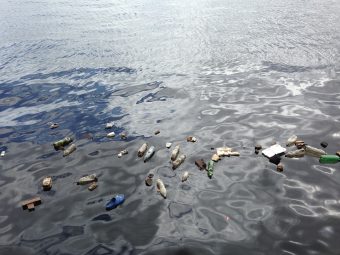
The way things are going now, our oceans will contain more plastic than fish by 2050. An ambitious United Nations campaign aims to stop this from happening.
On Wednesday, UN Environment announced its #CleanSeas initiative at the Economist World Ocean Summit in Bali, Indonesia. The campaign focuses on two major sources of marine litter: single-use plastic bags and microplastics in cosmetic products. The goal is to eliminate these major sources of marine litter by 2022.
“We’ve stood by too long as the problem has gotten worse,” Erik Solheim, head of UN Environment, said in a statement. “It must stop.”
Each year, more than 8 million tons of plastic ends up in the oceans. Much of it can’t be broken down and will remain in the oceans for centuries. The debris injures and kills fish, seabirds and marine mammals. It also causes fish to be smaller and slower than those raised in clean water.
There’s also a concern that it could be harmful for humans to consume fish that have ingested plastic, but more research needs to be done on the issue.
Plastic pollution costs $8 billion in damage to marine ecosystems each year, according to UN Environment.
Ten countries, which are considered pioneers in addressing the issue, have joined the #CleanSeas initiative. They include Indonesia, Uruguay, Belgium, Costa Rica and France. The United States hasn’t yet joined in.
It’s up to the participating countries to find ways to reduce the amount of plastic being introduced to the oceans.
Indonesia, for example, has committed to slashing its marine litter by 70 percent by 2025. Uruguay said it will tax single-use plastic bags later this year.
Major companies are also getting involved.
Dell Computers announced that its product packaging will incorporate plastic that has been fished out of the sea near Haiti.
The UN also hopes to target the personal care industry’s use of microplastics, which are tiny plastic particles that are found in toothpaste and skin care products. In many cases these plastic beads have replaced natural ingredients. Waste treatment facilities don’t always trap microbeads after they’re flushed down the drain, allowing the beads to find their way into the oceans.
“On bathroom shelves around the world sit products that are destroying life in our oceans,” actress and advocate Nadya Hutagalung said in a statement. “No beauty product is worth destroying the world’s beautiful oceans, not to mention our own human well-being.”
Source: huffingtonpost.com



